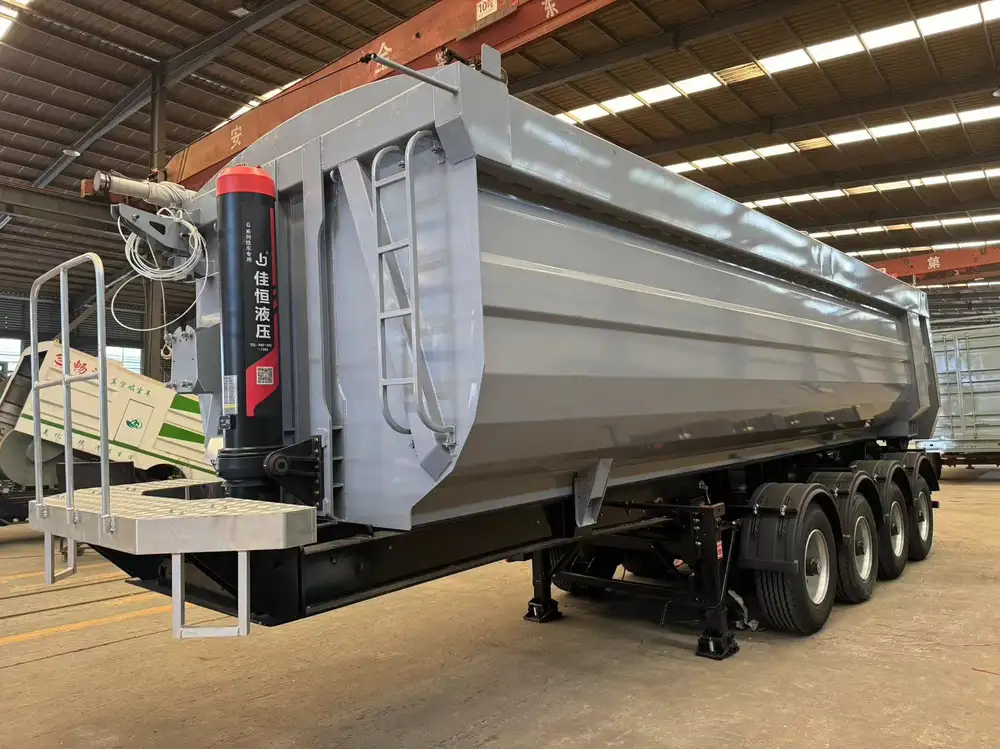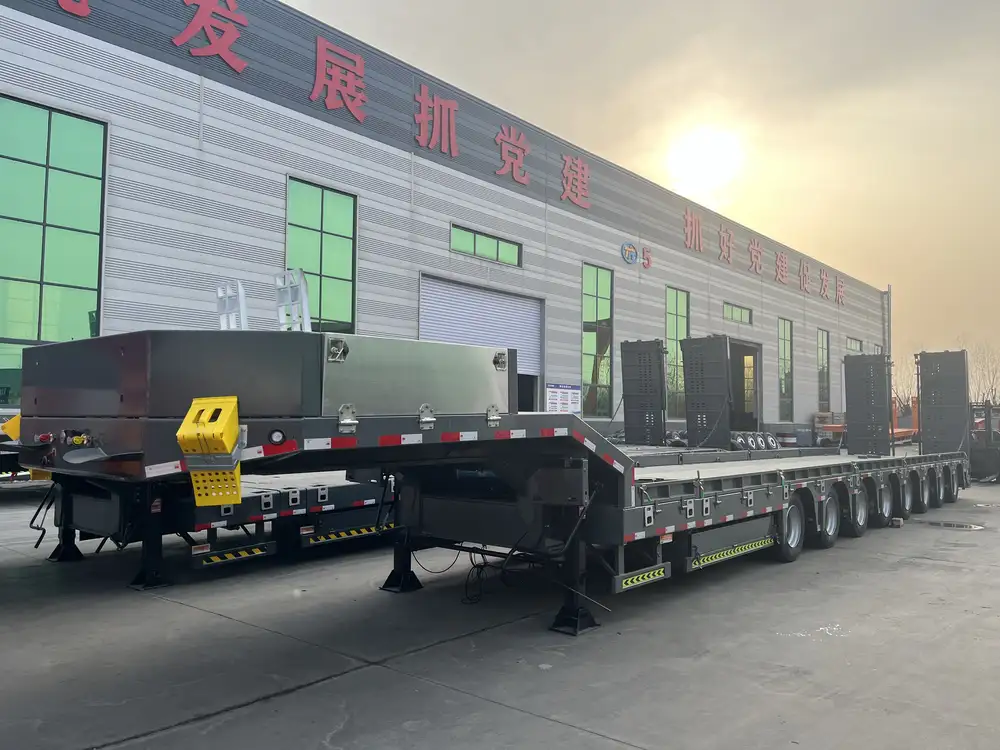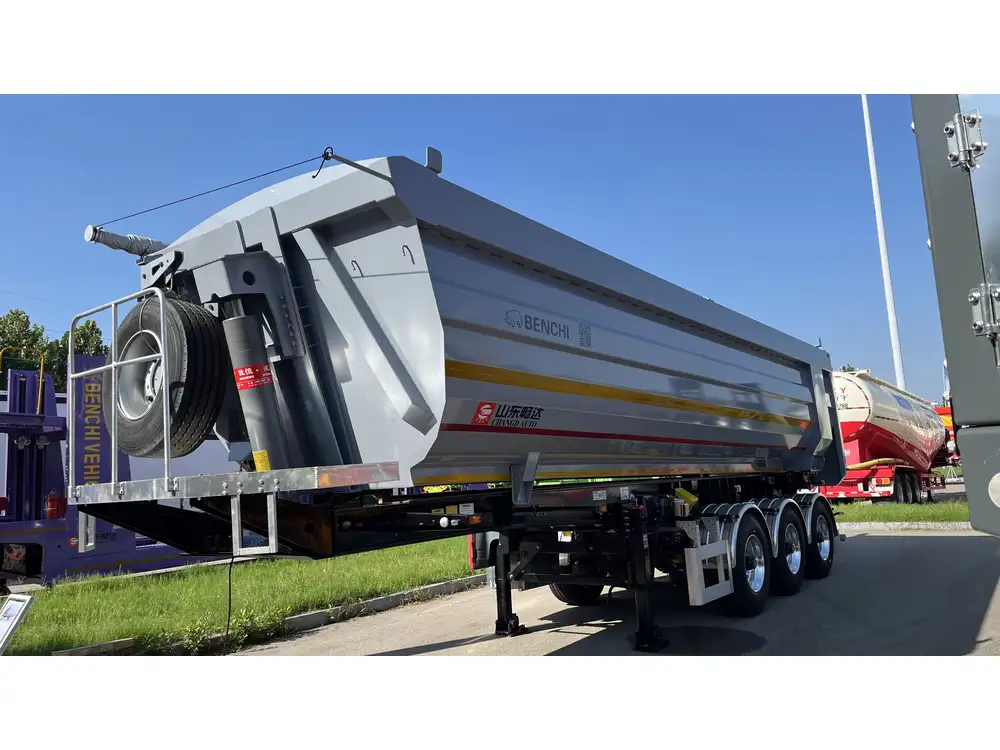Introduction to Semi-Tractor Trailers
In the vast realm of logistics and transportation, semi-trailer trucks play an indispensable role. These vehicles, comprised of a tractor unit and one or more semi-trailers, are the workhorses of the freight industry. They facilitate the movement of goods across cities, states, and countries. However, a critical question that often arises is: How tall is a semi tractor trailer?
This seemingly straightforward inquiry unveils a multitude of factors, ranging from regulatory requirements to design specifications. This detailed exploration will not only answer this crucial question but will also provide insights into the various dimensions, types, and regulations governing semi-trailer height.
1. Standard Height Dimensions of Semi-Tractor Trailers
The average height of a semi-truck, fully loaded with a trailer, typically ranges between 13.5 feet (4.1 meters) and 14.5 feet (4.4 meters). However, this can vary based on several factors, providing a nuanced understanding of the heights associated with various trucking configurations.
- Tractor Unit Height: The tractor unit itself usually measures around 10 to 12 feet (3 to 3.7 meters) in height.
- Trailers: The standard height for the trailers can reach up to 13.5 feet (4.1 meters) in length when fully loaded.
Here’s a breakdown of common configurations and their respective heights:
| Configuration | Height (Feet) | Height (Meters) |
|---|---|---|
| Standard Tractor | 10 – 12 | 3 – 3.7 |
| Standard Trailer | 13.5 | 4.1 |
| Total Height (Loaded) | 13.5 – 14.5 | 4.1 – 4.4 |

2. Federal and State Regulations on Height
Height regulations for semi-trailer trucks aren’t uniform across the United States. Local jurisdictions can have distinct rules which can impact the design and operational strategies for trucking companies.
Federal Regulations
At the federal level, the U.S. Department of Transportation (USDOT) mandates a maximum height of 13.5 feet (4.1 meters) for vehicles operating on the interstate highway system. This height is intended to ensure safe passage under bridges and other overhanging structures.
State Regulations
Individual states can impose additional restrictions. For instance, some states may allow special permits for higher loads, which can sometimes reach 14.5 feet (4.4 meters). It’s crucial for operators to verify these regulations in each state they traverse to avoid hefty fines and ensure safety.

3. Factors Affecting the Height of Semi-Tractor Trailers
Understanding the height of semi-trailer trucks goes beyond mere measurements; various factors contribute to the overall height.
3.1 Load Type
The type of cargo being transported plays a significant role.
- Standard Freight: Shipments that conform to regulations for standard products will typically have standard height trailers.
- Specialized Equipment: Oversized loads or specialized freight may require specific trailer modifications, impacting total height.
3.2 Trailer Type
Different trailer classes each present their own height specifications:
- Flatbed Trailers: Generally lower than standard enclosed trailers, typically around 4.0 – 4.5 feet (1.2 – 1.4 meters) in height.
- Enclosed Trailers: Standard enclosed trailers adhere to the federal maximum.
- Reefer Trailers: Refrigerated trailers are often comparable in height but may vary slightly due to insulation.

3.3 Wheel Configuration
The number of axles and the way they are arranged can influence the total height.
- Single Axles: Tend to be lower compared to tandem or tri-axle setups, affecting stability and height.
- Tandem Axles: Commonly used for weight distribution and may slightly elevate the overall height due to added structures.
4. Implications of Trailer Height on Transportation
4.1 Route Planning
The height of your semi-trailer can drastically influence route planning. Operators must consider:
- Bridge Clearances: Certain routes may be navigable by trucks under 13.5 feet, while others might have lower clearance.
- Freight Terminal Access: Not all freight terminals can accommodate taller vehicles, impacting loading and unloading.

4.2 Loading Docks
Loading dock designs also reflect considerations for truck height, with some docks designed specifically for lower vehicles.
- Dock Heights: Standard dock heights are typically between 48 – 52 inches (1.22 – 1.32 meters) to facilitate accessibility for methods of loading and unloading.
4.3 Compliance and Fines
Failing to adhere to height regulations can lead to significant penalties. Transport operators must ensure that their fleets remain within legal limits to avoid incidents that could incur fines or operational delays.
5. Equipment & Modifications
In some circumstances, trucking companies may choose to modify their vehicles to cater to specific needs or restrictions. Here are some common options:

5.1 Flatbed Modifications
For oversized items, flatbed modifications are commonly made, allowing for:
- Special Rigging: This increases stability, but may affect overall height.
- Adjustment Systems: Some modifications allow for adjustable heights, beneficial for varying loads.
5.2 Lowered Trailers
Trailers designed to be lower help with maintaining height regulations while also accommodating taller freight.
6. The Importance of Accurate Measurements
The efficacy of transportation solutions can hinge on accuracy in measurements. Let’s analyze why accurate height reporting benefits operators and logistics managers alike:

6.1 Optimizing Fleet Operations
Knowing the height of different trailer types allows for better optimization in terms of routing and scheduling.
6.2 Risk Mitigation
Ensuring compliance with height regulations across multiple states reduces the risk of accidents and enhances corporate liability management.
6.3 Improved Customer Satisfaction
Accurate height measurements allow for informed delivery times, improving customer satisfaction by ensuring timely and safe delivery of goods.

7. Conclusion
The height of semi-trailer trucks is multifaceted, influenced by design, regulations, cargo types, and state mandates. Precise knowledge of these influences is crucial for operators aiming to streamline their operations while ensuring compliance with national and local regulations. Height requirements play a pivotal role in route planning, loading dock accessibility, and the overall logistics framework within which semi-trailer manufacturers, companies, and drivers operate.
As the logistics and transportation industry evolves, staying informed about these factors contributes to operational efficiency and safety, underscoring the importance of understanding specific height requirements in the realm of semi-truck transportation. By grasping these dimensions and their regulatory implications, stakeholders can not only meet their operational goals but also foster a safer, more efficient transport environment.
For semi-trailer manufacturers and transportation companies, delving deeper into height specifications isn’t just a matter of compliance—it’s about optimizing every aspect of their operations and contributing to the systemic reliability of the logistics industry as a whole.
This in-depth exploration of the height of semi-truck trailers aims to equip readers with comprehensive knowledge while retaining their attention through varied structures and details. By fostering an understanding of the interconnected factors surrounding trailer height, readers stand empowered to make informed decisions in their transportation endeavors.



